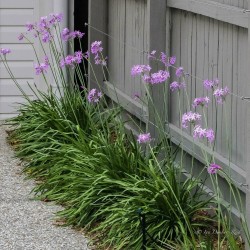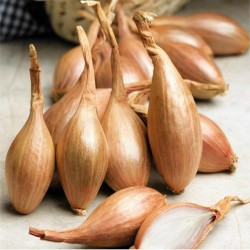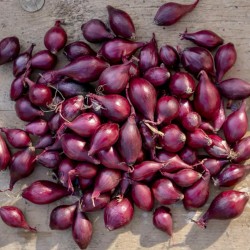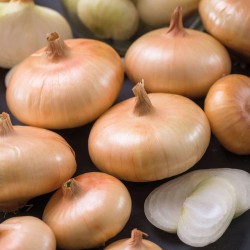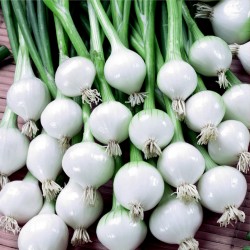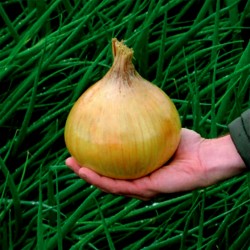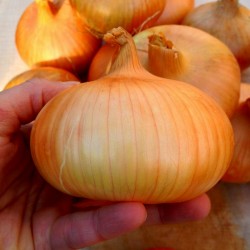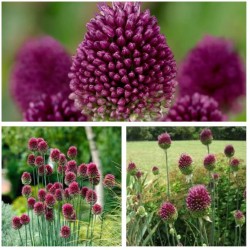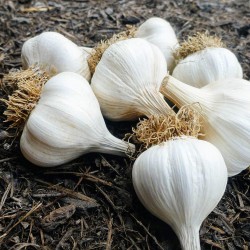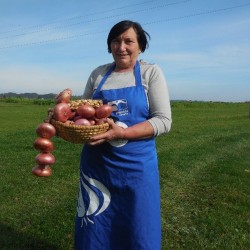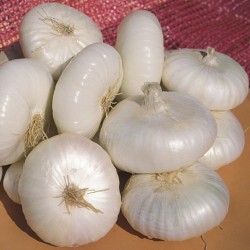Seeds Gallery Com,
5/
5
<!DOCTYPE html>
<html>
<head>
<meta http-equiv="Content-Type" content="text/html; charset=UTF-8" />
</head>
<body>
<h2><strong>Bosanské stroužky česneku "Bosanac"</strong></h2>
<h2><span style="color: #ff0000;"><strong>Cena za 5 stroužků česneku</strong></span></h2>
<p><span jsaction="agoMJf:PFBcW;usxOmf:aWLT7;jhKsnd:P7O7bd,F8DmGf;Q4AGo:Gm7gYd,qAKMYb;uFUCPb:pvnm0e,pfE8Hb,PFBcW;f56efd:dJXsye;EnoYf:KNzws,ZJsZZ,JgVSJc;zdMJQc:cCQNKb,ZJsZZ,zchEXc;Ytrrj:JJDvdc;tNR8yc:GeFvjb;oFN6Ye:hij5Wb" jscontroller="Zl5N8" jsmodel="SsMkhd" jsname="txFAF" class="JLqJ4b ChMk0b" data-language-for-alternatives="cs" data-language-to-translate-into="en" data-phrase-index="4" jsdata="uqLsIf;_;$580"><span jsaction="click:qtZ4nf,GFf3ac,tMZCfe; contextmenu:Nqw7Te,QP7LD; mouseout:Nqw7Te; mouseover:qtZ4nf,c2aHje" jsname="W297wb">Bosenský česnek může být malý (v průměru jedna cibule váží 10 gramů), ale je nenahraditelný kvůli chuti a štiplavosti.</span></span><span> </span><span jsaction="agoMJf:PFBcW;usxOmf:aWLT7;jhKsnd:P7O7bd,F8DmGf;Q4AGo:Gm7gYd,qAKMYb;uFUCPb:pvnm0e,pfE8Hb,PFBcW;f56efd:dJXsye;EnoYf:KNzws,ZJsZZ,JgVSJc;zdMJQc:cCQNKb,ZJsZZ,zchEXc;Ytrrj:JJDvdc;tNR8yc:GeFvjb;oFN6Ye:hij5Wb" jscontroller="Zl5N8" jsmodel="SsMkhd" jsname="txFAF" class="JLqJ4b ChMk0b" data-language-for-alternatives="cs" data-language-to-translate-into="en" data-phrase-index="5" jsdata="uqLsIf;_;$581"><span jsaction="click:qtZ4nf,GFf3ac,tMZCfe; contextmenu:Nqw7Te,QP7LD; mouseout:Nqw7Te; mouseover:qtZ4nf,c2aHje" jsname="W297wb">Dnes v Bosně a Hercegovině tento česnek stále zná a vlastní jen několik rodin.</span></span><span jsaction="agoMJf:PFBcW;usxOmf:aWLT7;jhKsnd:P7O7bd,F8DmGf;Q4AGo:Gm7gYd,qAKMYb;uFUCPb:pvnm0e,pfE8Hb,PFBcW;f56efd:dJXsye;EnoYf:KNzws,ZJsZZ,JgVSJc;zdMJQc:cCQNKb,ZJsZZ,zchEXc;Ytrrj:JJDvdc;tNR8yc:GeFvjb;oFN6Ye:hij5Wb" jscontroller="Zl5N8" jsmodel="SsMkhd" jsname="txFAF" class="JLqJ4b" data-language-for-alternatives="cs" data-language-to-translate-into="en" data-phrase-index="6" jsdata="uqLsIf;_;$582"><span jsaction="click:qtZ4nf,GFf3ac,tMZCfe; contextmenu:Nqw7Te,QP7LD; mouseout:Nqw7Te; mouseover:qtZ4nf,c2aHje" jsname="W297wb"> </span></span></p>
<p><span jsaction="agoMJf:PFBcW;usxOmf:aWLT7;jhKsnd:P7O7bd,F8DmGf;Q4AGo:Gm7gYd,qAKMYb;uFUCPb:pvnm0e,pfE8Hb,PFBcW;f56efd:dJXsye;EnoYf:KNzws,ZJsZZ,JgVSJc;zdMJQc:cCQNKb,ZJsZZ,zchEXc;Ytrrj:JJDvdc;tNR8yc:GeFvjb;oFN6Ye:hij5Wb" jscontroller="Zl5N8" jsmodel="SsMkhd" jsname="txFAF" class="JLqJ4b ChMk0b" data-language-for-alternatives="cs" data-language-to-translate-into="en" data-phrase-index="7" jsdata="uqLsIf;_;$583"><span jsaction="click:qtZ4nf,GFf3ac,tMZCfe; contextmenu:Nqw7Te,QP7LD; mouseout:Nqw7Te; mouseover:qtZ4nf,c2aHje" jsname="W297wb">Z pohledu pěstitele je to vysoká tmavě zelená rostlina a velmi dobře přežila, obvykle roste zdravě a zdá se, že je do jisté míry odolná vůči mnoha chorobám, které mohou česnek ovlivnit.</span></span><span> </span></p>
<p><span jsaction="agoMJf:PFBcW;usxOmf:aWLT7;jhKsnd:P7O7bd,F8DmGf;Q4AGo:Gm7gYd,qAKMYb;uFUCPb:pvnm0e,pfE8Hb,PFBcW;f56efd:dJXsye;EnoYf:KNzws,ZJsZZ,JgVSJc;zdMJQc:cCQNKb,ZJsZZ,zchEXc;Ytrrj:JJDvdc;tNR8yc:GeFvjb;oFN6Ye:hij5Wb" jscontroller="Zl5N8" jsmodel="SsMkhd" jsname="txFAF" class="JLqJ4b ChMk0b" data-language-for-alternatives="cs" data-language-to-translate-into="en" data-phrase-index="8" jsdata="uqLsIf;_;$584"><span jsaction="click:qtZ4nf,GFf3ac,tMZCfe; contextmenu:Nqw7Te,QP7LD; mouseout:Nqw7Te; mouseover:qtZ4nf,c2aHje" jsname="W297wb">Původně pochází z Bosny a Hercegoviny, ale dobře roste ve všech ostatních zemích.</span></span><span jsaction="agoMJf:PFBcW;usxOmf:aWLT7;jhKsnd:P7O7bd,F8DmGf;Q4AGo:Gm7gYd,qAKMYb;uFUCPb:pvnm0e,pfE8Hb,PFBcW;f56efd:dJXsye;EnoYf:KNzws,ZJsZZ,JgVSJc;zdMJQc:cCQNKb,ZJsZZ,zchEXc;Ytrrj:JJDvdc;tNR8yc:GeFvjb;oFN6Ye:hij5Wb" jscontroller="Zl5N8" jsmodel="SsMkhd" jsname="txFAF" class="JLqJ4b" data-language-for-alternatives="cs" data-language-to-translate-into="en" data-phrase-index="9" jsdata="uqLsIf;_;$585"><span jsaction="click:qtZ4nf,GFf3ac,tMZCfe; contextmenu:Nqw7Te,QP7LD; mouseout:Nqw7Te; mouseover:qtZ4nf,c2aHje" jsname="W297wb"> </span></span><span jsaction="agoMJf:PFBcW;usxOmf:aWLT7;jhKsnd:P7O7bd,F8DmGf;Q4AGo:Gm7gYd,qAKMYb;uFUCPb:pvnm0e,pfE8Hb,PFBcW;f56efd:dJXsye;EnoYf:KNzws,ZJsZZ,JgVSJc;zdMJQc:cCQNKb,ZJsZZ,zchEXc;Ytrrj:JJDvdc;tNR8yc:GeFvjb;oFN6Ye:hij5Wb" jscontroller="Zl5N8" jsmodel="SsMkhd" jsname="txFAF" class="JLqJ4b ChMk0b" data-language-for-alternatives="cs" data-language-to-translate-into="en" data-phrase-index="10" jsdata="uqLsIf;_;$586"><span jsaction="click:qtZ4nf,GFf3ac,tMZCfe; contextmenu:Nqw7Te,QP7LD; mouseout:Nqw7Te; mouseover:qtZ4nf,c2aHje" jsname="W297wb">Ti, kteří mají to štěstí, že ji vlastní, ji každý rok znovu vysazují, aby si udrželi tuto výjimečnou odrůdu česneku.</span></span><span jsaction="agoMJf:PFBcW;usxOmf:aWLT7;jhKsnd:P7O7bd,F8DmGf;Q4AGo:Gm7gYd,qAKMYb;uFUCPb:pvnm0e,pfE8Hb,PFBcW;f56efd:dJXsye;EnoYf:KNzws,ZJsZZ,JgVSJc;zdMJQc:cCQNKb,ZJsZZ,zchEXc;Ytrrj:JJDvdc;tNR8yc:GeFvjb;oFN6Ye:hij5Wb" jscontroller="Zl5N8" jsmodel="SsMkhd" jsname="txFAF" class="JLqJ4b" data-language-for-alternatives="cs" data-language-to-translate-into="en" data-phrase-index="11" jsdata="uqLsIf;_;$587"><span jsaction="click:qtZ4nf,GFf3ac,tMZCfe; contextmenu:Nqw7Te,QP7LD; mouseout:Nqw7Te; mouseover:qtZ4nf,c2aHje" jsname="W297wb"> </span></span></p>
<p><span jsaction="agoMJf:PFBcW;usxOmf:aWLT7;jhKsnd:P7O7bd,F8DmGf;Q4AGo:Gm7gYd,qAKMYb;uFUCPb:pvnm0e,pfE8Hb,PFBcW;f56efd:dJXsye;EnoYf:KNzws,ZJsZZ,JgVSJc;zdMJQc:cCQNKb,ZJsZZ,zchEXc;Ytrrj:JJDvdc;tNR8yc:GeFvjb;oFN6Ye:hij5Wb" jscontroller="Zl5N8" jsmodel="SsMkhd" jsname="txFAF" class="JLqJ4b ChMk0b" data-language-for-alternatives="cs" data-language-to-translate-into="en" data-phrase-index="12" jsdata="uqLsIf;_;$588"><span jsaction="click:qtZ4nf,GFf3ac,tMZCfe; contextmenu:Nqw7Te,QP7LD; mouseout:Nqw7Te; mouseover:qtZ4nf,c2aHje" jsname="W297wb">Je zajímavé říci, že i když je extrémně štiplavý a má extrémně silnou vůni, stále necítí špatně z dechu jako jiné odrůdy.</span></span><span jsaction="agoMJf:PFBcW;usxOmf:aWLT7;jhKsnd:P7O7bd,F8DmGf;Q4AGo:Gm7gYd,qAKMYb;uFUCPb:pvnm0e,pfE8Hb,PFBcW;f56efd:dJXsye;EnoYf:KNzws,ZJsZZ,JgVSJc;zdMJQc:cCQNKb,ZJsZZ,zchEXc;Ytrrj:JJDvdc;tNR8yc:GeFvjb;oFN6Ye:hij5Wb" jscontroller="Zl5N8" jsmodel="SsMkhd" jsname="txFAF" class="JLqJ4b" data-language-for-alternatives="cs" data-language-to-translate-into="en" data-phrase-index="13" jsdata="uqLsIf;_;$589"><span jsaction="click:qtZ4nf,GFf3ac,tMZCfe; contextmenu:Nqw7Te,QP7LD; mouseout:Nqw7Te; mouseover:qtZ4nf,c2aHje" jsname="W297wb"> </span></span></p>
<p><span jsaction="agoMJf:PFBcW;usxOmf:aWLT7;jhKsnd:P7O7bd,F8DmGf;Q4AGo:Gm7gYd,qAKMYb;uFUCPb:pvnm0e,pfE8Hb,PFBcW;f56efd:dJXsye;EnoYf:KNzws,ZJsZZ,JgVSJc;zdMJQc:cCQNKb,ZJsZZ,zchEXc;Ytrrj:JJDvdc;tNR8yc:GeFvjb;oFN6Ye:hij5Wb" jscontroller="Zl5N8" jsmodel="SsMkhd" jsname="txFAF" class="JLqJ4b ChMk0b" data-language-for-alternatives="cs" data-language-to-translate-into="en" data-phrase-index="14" jsdata="uqLsIf;_;$590"><span jsaction="click:qtZ4nf,GFf3ac,tMZCfe; contextmenu:Nqw7Te,QP7LD; mouseout:Nqw7Te; mouseover:qtZ4nf,c2aHje" jsname="W297wb">Tuto odrůdu česneku z celého srdce doporučujeme a jsme si jisti, že budete stejně nadšení jako my!</span></span></p>
</body>
</html>
VE 229




